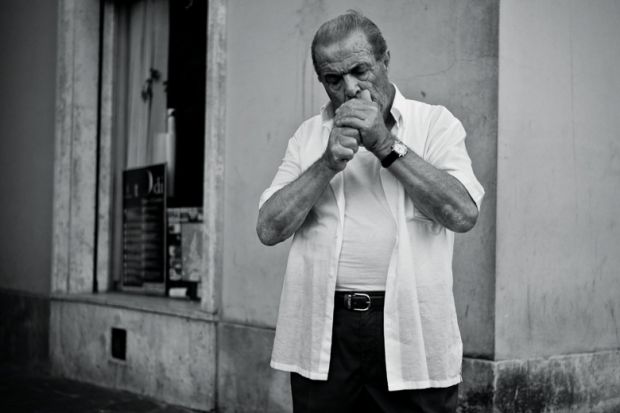Old Italy hands generally wax lyrical about their favourite bar, tavola calda and trattoria. Yet, when pressed to be rational, they will add their favourite tabaccaio, where all sorts of government forms, stamps, salt and tobacco products can be obtained. A tabaccaio is a place for gossip and information and all those little things you wondered where to buy. Traditionally it was where the Italian state and the neighbourhood mingled.
Tabaccai and the new nation came together almost immediately in 1861 with the creation of the Monopolio dello stato. This commercial and manufacturing institution conducted under state monopoly held its position through changing regimes until neoliberal privatisation after the implementation of relatively effective legislation against smoking in public places in 2005. At its height during the 1950s, the Monopolio hired 25,000 Italians, the majority female, a tally supplemented with tens of thousands of peasants, employed by a nation that was becoming Europe’s largest tobacco producer. By then, tobacco products brought in 10 per cent of government income.
Yet, as Carl Ipsen is at pains to explain in this plainly written history, tabaccai should not be wrapped in a sentimental glow, because they owed their name to and won their chief profits from marketing cancer throughout what he calls the “tobacco century”. The industry’s trade publication, La Voce del Tabaccaio, stubbornly denied the growing medical evidence of the link between cigarettes and cancer, reporting in 1954 a deluded medical professor from Siena who believed that “smoking could provide…a sense of relief, comfort, well-being and [contented] forgetfulness”. By curbing hunger, it ensured that “a smoker…often lives longer than a non-smoker”. Even in 1987, La Voce maintained that “a simple examination of EEC data confirms that there is no relation between mortality from serious illnesses and smoking”.
Ipsen is careful to place the Italian story in the context of international developments, delineating a relative “underdevelopment” until the “Economic Miracle” of the 1960s and therefore relatively low levels of tobacco use. Around 1900, even the cheapest Nazionali brand, smoked at a rate of 10 a day, cost 10 per cent of a worker’s income and cigarettes had not yet penetrated the southern peasant’s world. The modest economic performance of the Fascist regime did not radically alter this situation, although it is nice to be told that the MILIT brand, introduced in 1935 as the Fascist militia marauded through Ethiopia, was parodied by soldiers who had not surrendered their minds to the totalitarian regime as Merda Italiana Lavorata e Inserita in Tubetti (Italian shit worked over and shoved into tubes).
The real Italian catch-up awaited Christian and liberal democracy after 1945, where ironies abound. The 1970s, labelled by Ipsen “the era of collective action”, was also “the last decade of unrepentant smoking”. Then the first push of Italian feminism brought fags to women’s lips; lung cancer for women more than doubled between 1970 and 2000. Unrepentantly, the Monopolio kept selling, marketing a new MS brand billed as bringing American science to manufacture and a beneficently “lighter” taste.
Eventually, even sceptical Italians came to believe the damning evidence accumulated against smoking, although 20 per cent still smoke. Just what message they took from the long connection between the state, its commercial friends at home and abroad and the sale of death must await further exploration.
R. J. B. Bosworth is senior research fellow in history, Jesus College, Oxford.
Fumo: Italy’s Love Affair with the Cigarette
By Carl Ipsen
Stanford University Press, 300pp, £70.00 and £20.99
ISBN 9780804795463 and 98396
Published 4 May 2016




